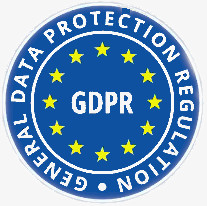
Imagine your call center agents have a clear guide for every customer call. Instead of guessing what to ask next, they follow a step-by-step map:
- Customer: “I need to cancel my subscription.”
- Decision Path: Verify account → Check cancellation policy → Offer retention deal → Confirm.
Decision trees are interactive workflows that turn chaotic calls into streamlined processes. They’re not just flowcharts—they’re logic-driven guides that adapt to customer responses, slashing costs while keeping clients really happy.
Decision Trees vs. Call Scripts: Which Saves More Money?
Let’s get some context first:
The Problem with Call Scripts
Call scripts are like rigid teleprompters:
While they ensure compliance (e.g., legal disclaimers).Useful for simple, repetitive tasks (e.g., password resets), they fail when customers go off-track (“But I paid annually!”) and cause increase in handling time by 15% when agents scramble off-script.
Why Decision Trees Win
Decision trees act as dynamic playbooks:
They complex, branching scenarios (e.g., tech support and they reduce Average Handle Time (AHT) by up to 40%.
However, they do require upfront setup (worth every penny).
Process Shepherd bridges the gap with smart scripting—a hybrid that auto-adjusts scripts based on CRM data. Example: If a high-value customer calls, agents see tailored retention offers without manual searches.
How Decision Tree Software Cuts Costs (Without Cutting Corners)
- Map Common Issues: Start with frequent pain points like returns or billing errors.
- Build Logic Paths: Use drag-and-drop tools to create “if/then” branches.
- Integrate Everywhere: Sync with your CRM, IVR, and agent dashboards.
- Analyze & Optimize: Track which paths resolve issues fastest.
Process Shepherd supercharges this with:
- Knowledge Base-Powered Learning: Adjusts paths based on what works (e.g., “Skipping Step 3 reduces AHT by 20%”).
- Real-Time Alerts: Flags compliance risks before agents click “submit.”
👉 Try Process Shepherd’s Cost-Saving Trees Free
When to Use Decision Trees (And When to Keep It Simple)
Decision Trees Shine When:
- Issues have multiple outcomes (e.g., troubleshooting).
- Compliance is critical (e.g., healthcare, finance).
- You’re drowning in escalations.
Stick to Scripts For:
- Straightforward tasks (e.g., balance inquiries).
- Legal mandates requiring verbatim wording.
5 Ways Decision Trees Slash Call Center Costs
1. Halve Average Handle Time (AHT)
Agents waste 30% or more of calls asking for info already in your CRM. Decision trees auto-populate data like order history, so agents skip the “Can I get your account number?” dance. Process Shepherd users report 50% faster resolutions thanks to CRM-guided paths.
2. Stop Costly Escalations in Their Tracks
And that’s a game changer of itself. Every escalation to Tier 2 support costs 3x more based on ticket complexity. Decision trees prevent this by empowering agents to solve issues upfront:
- “If the customer mentions ‘fraud,’ follow security steps → No escalation needed.” A retail brand using Process Shepherd reduced escalations by 65% in 3 months.
3. Hire (and Retain) Less-Experienced (Cheaper) Agents
Seasoned agents are expensive. Decision trees let you hire rookies and train them in days, not months:
- Day 1: Newbies follow step-by-step guides.
- Week 2: They handle exceptions with tooltip explanations.
- Month 1: They work autonomously.
Process Shepherd’s trees even include mini-training modules, cutting onboarding costs by 40%.
4. Make Self-Service Actually Work
75% of customers prefer DIY solutions—if they’re easy. Decision trees power:
- IVR Systems: “Press 1 for returns → Enter order number → Instant approval.”
- Chatbots: Guide users through fixes without live help.
Process Shepherd ensures bots and agents use the same logic, so customers don’t repeat themselves across channels.
5. Avoid Million-Dollar Mistakes
One wrong discount or data breach can cost millions. Decision trees enforce rules like:
- “Don’t refund non-returnable items.”
- “Mask sensitive data during screen shares.”
Process Shepherd adds real-time compliance checks, reducing policy breaches by up to 90%.
Decision Trees + Knowledge Bases = Fewer Calls, Lower Costs
Decision trees tell agents what to do; knowledge bases show how to do it. Together, they deflect calls:
- Example: A tree step says, “Reset the customer’s password.” Clicking it opens a knowledge base article with screenshots.
Process Shepherd uses knowledge base to suggest relevant articles mid-call. If an agent hesitates, it serves up training snippets—no supervisor needed.
Ready to Stop Bleeding Money on Inefficient Support?
Decision trees aren’t a luxury—they’re a necessity for cost-cutting. But generic tools leave you piecing together workflows like a jigsaw puzzle missing half its pieces.



